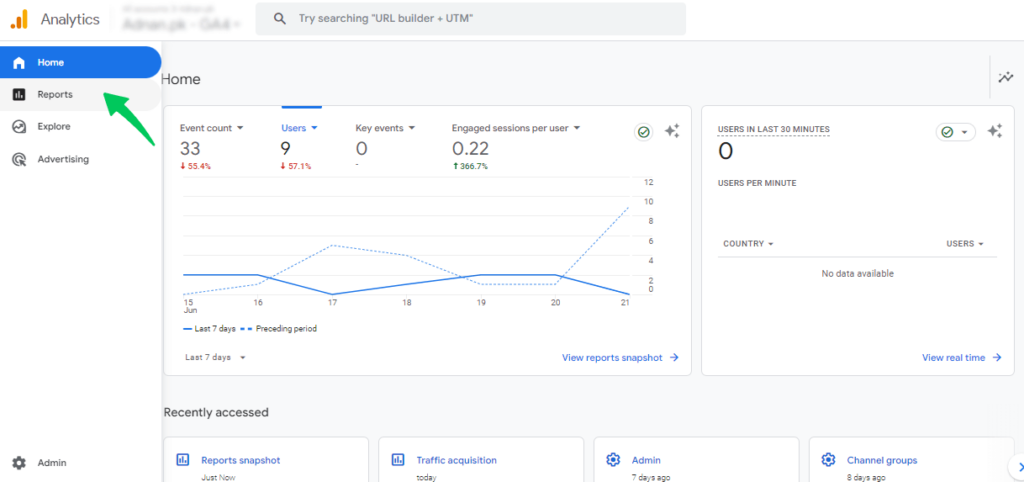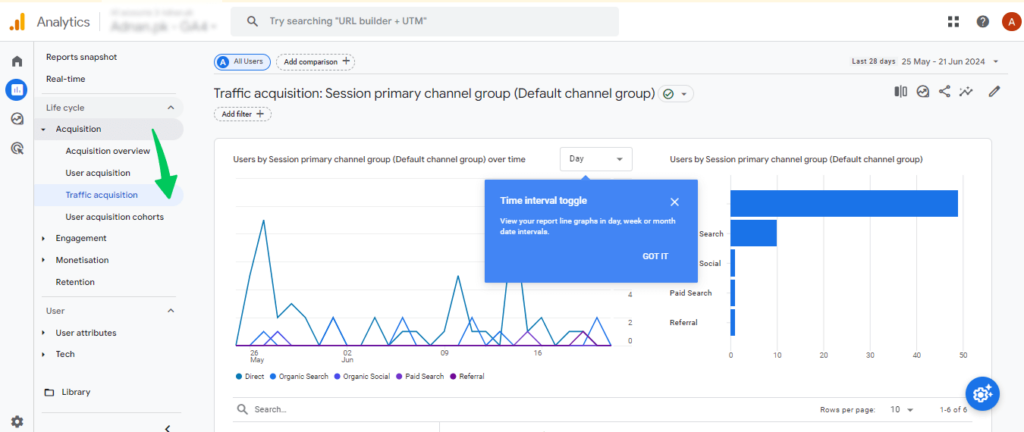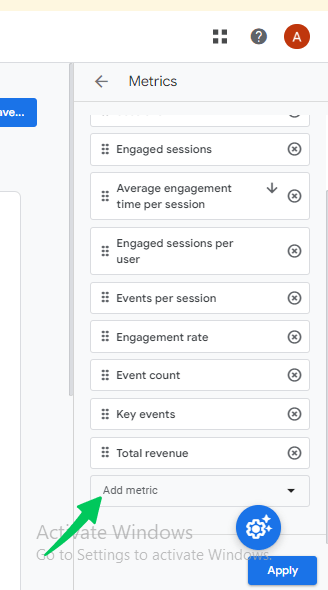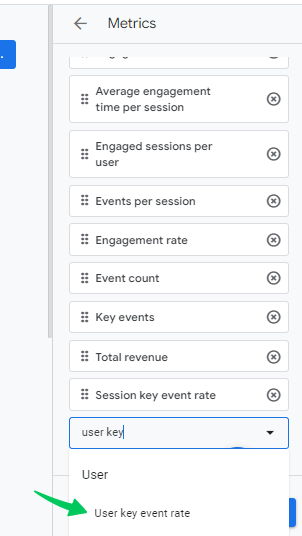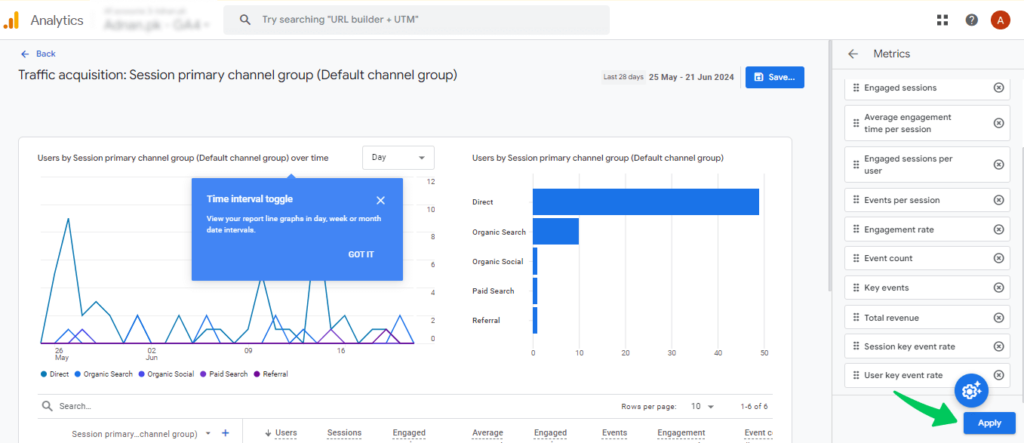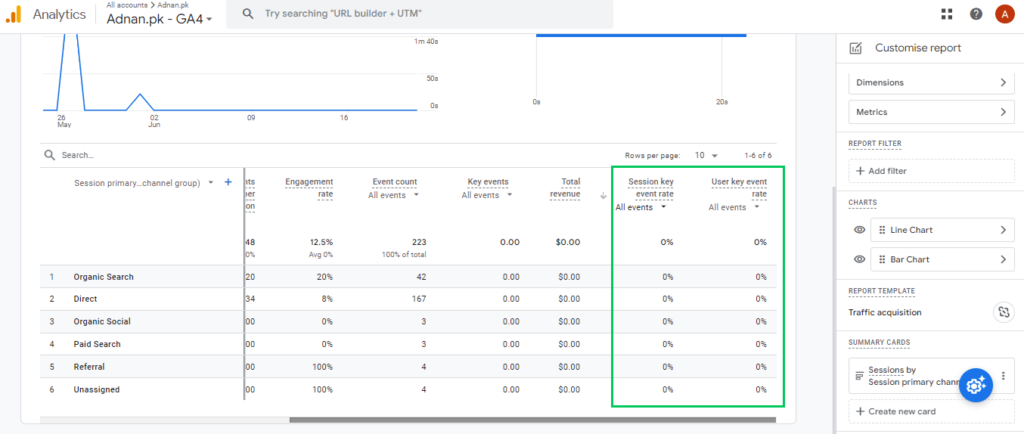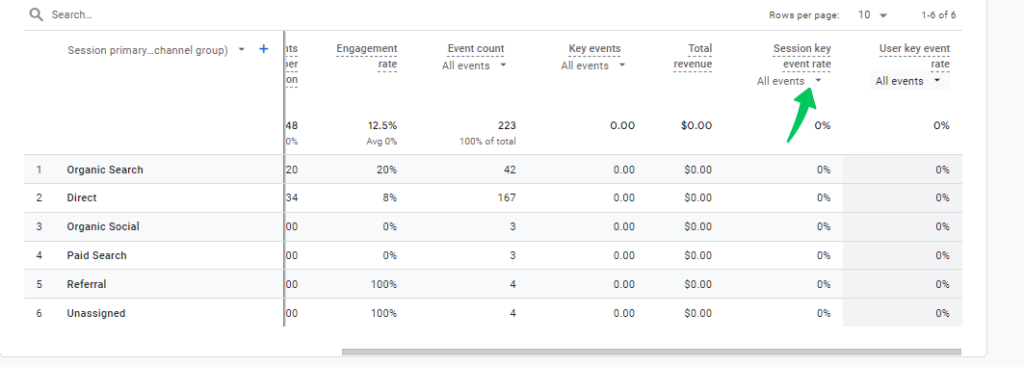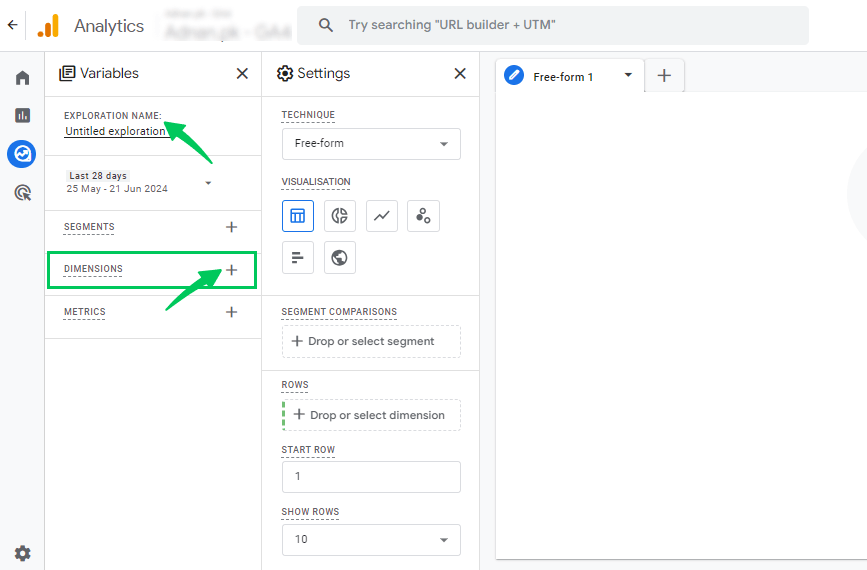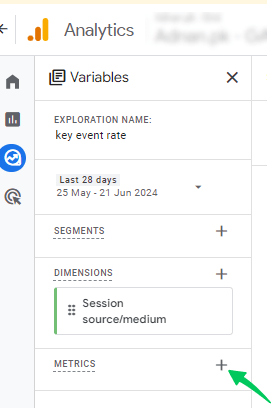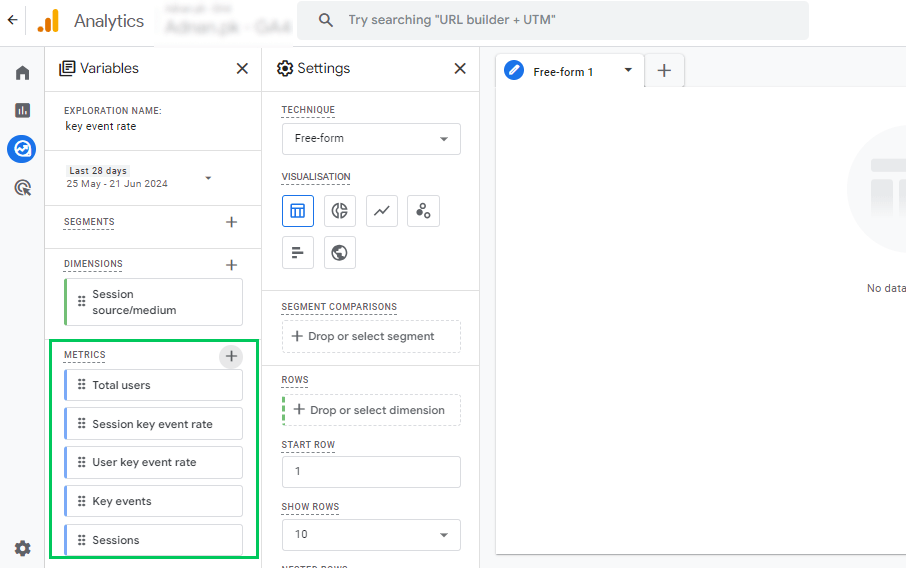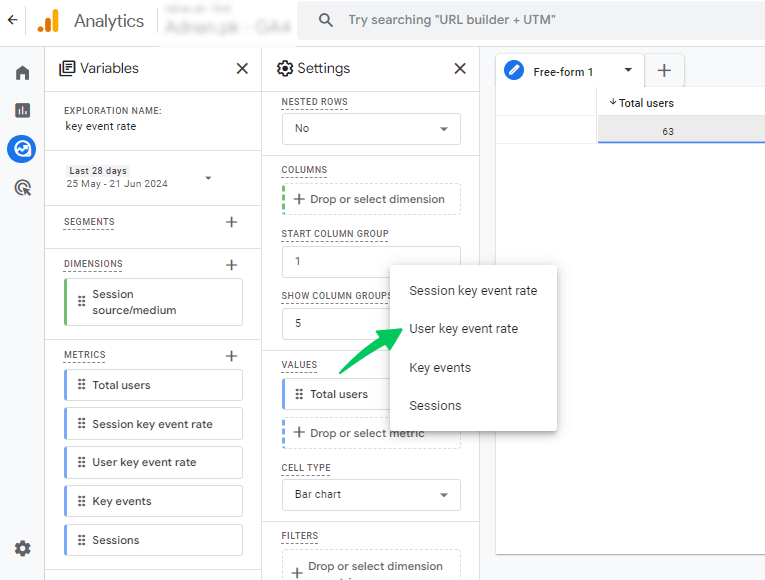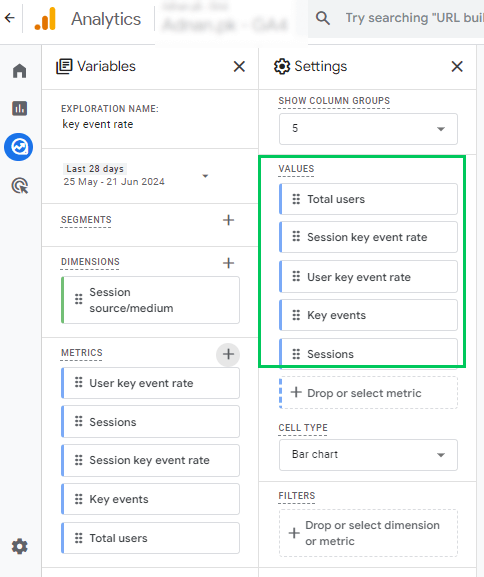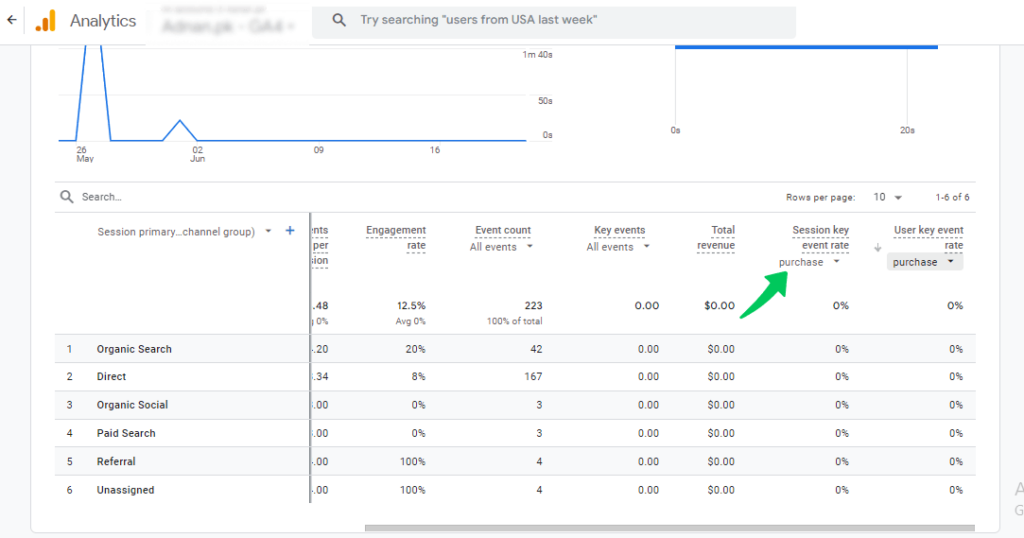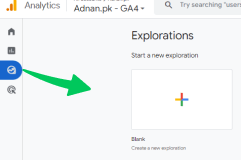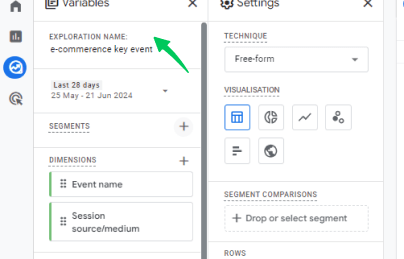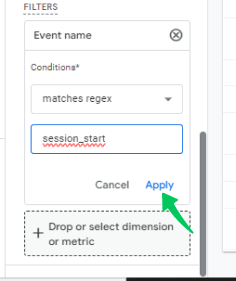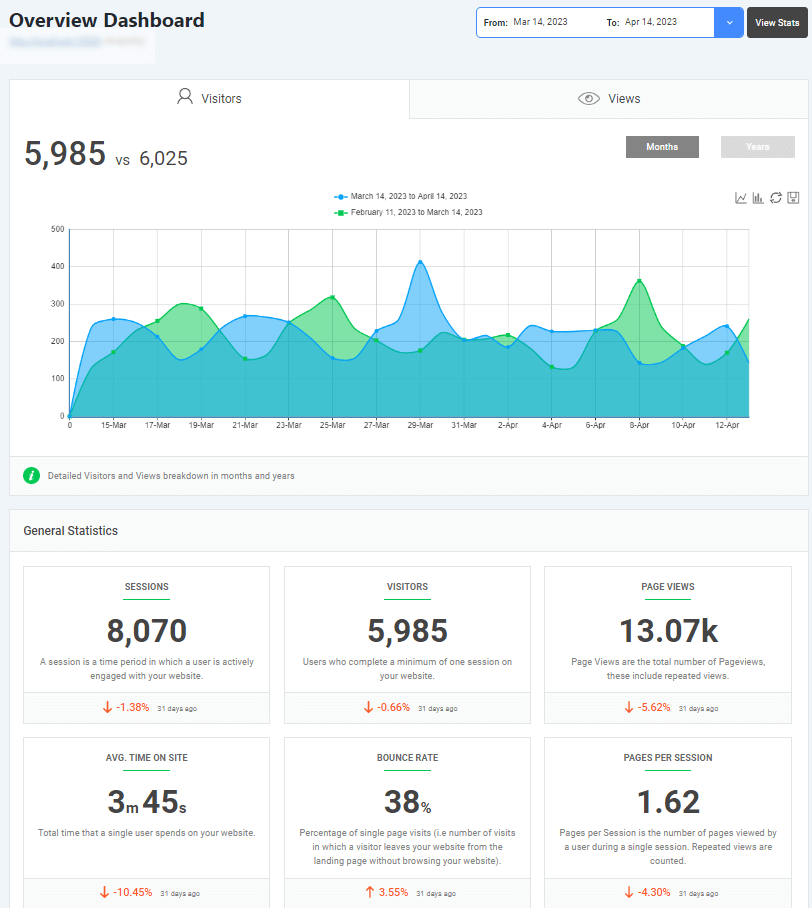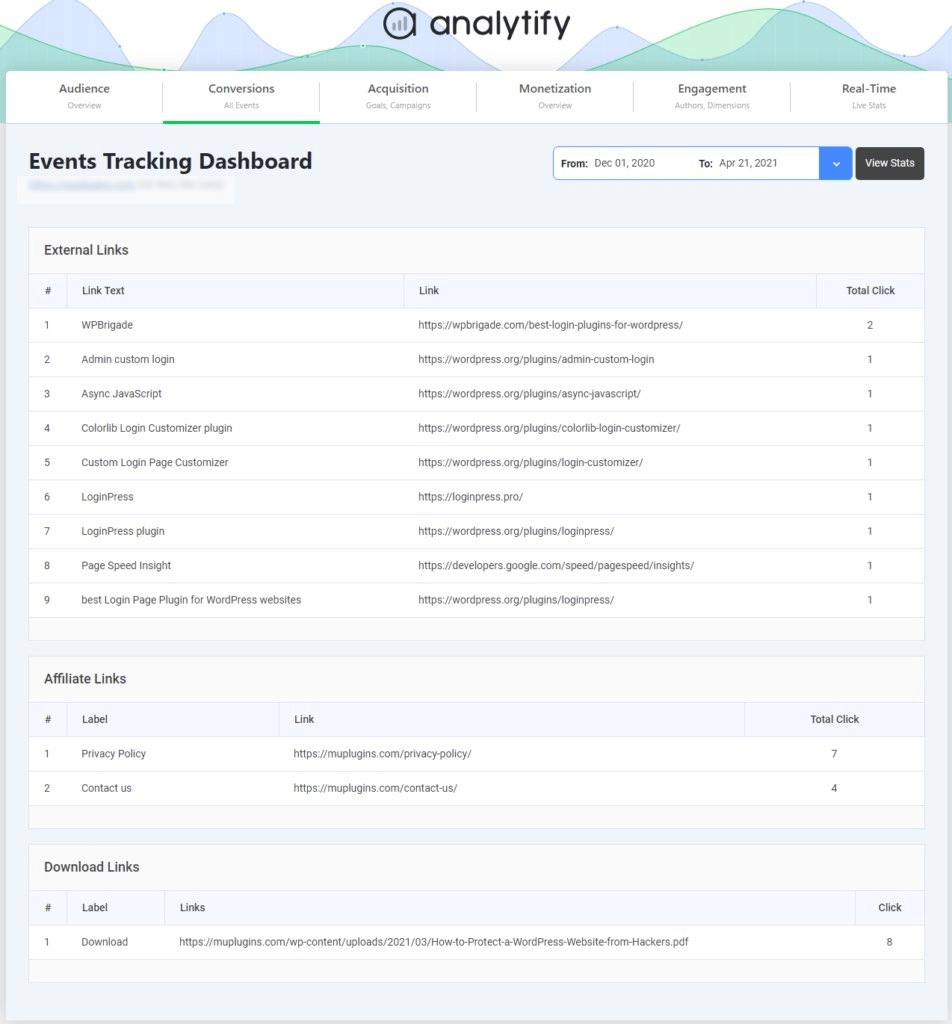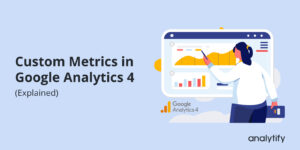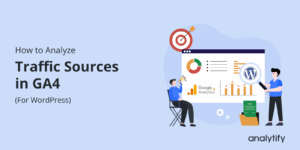
Google Analytics Conversion Rate (GA4) – Explained
Understanding website conversions is crucial for any marketer or business owner. Tracking your conversion rate can provide valuable information about your marketing efforts’ effectiveness and identify areas for improvement.
Whether you’re in e-commerce, lead generation, or content marketing, understanding conversion rate is essential for optimizing your website and achieving your business goals.
Google Analytics 4 (GA4) offers powerful conversion tracking capabilities. This guide dives deep into the GA4 conversion rate and explains its types. We’ll provide step-by-step instructions on locating Google Analytics conversion rate within reports and its significance for website optimization.
Let’s get started to explore more!
Google Analytics Conversion Rate (TOC):
What is Conversion Rate in Google Analytics?
In Google Analytics 4 (GA4), the term ‘conversion’ holds significant weight. It refers to a completed action that signifies a visitor achieving a desired outcome on your website.
This could be a purchase, a sign-up for a newsletter, or any other event you define as valuable for your business.
The conversion rate in GA4 is a percentage that helps you understand how effectively your website converts visitors into successful conversions.
In Universal Analytics (UA), a previous version of Google Analytics, the conversion rate was a single metric calculated by dividing the total number of conversions by the total number of sessions.
Conversion Rate (UA) = (Total Conversions / Total Sessions ) x 100%
This approach had limitations. It didn’t consider users who might convert across multiple sessions, which could be misleading.
GA4 addresses this issue by providing two distinct conversion rates, which are discussed in the section below.
This metric was called the conversion rate in the older version of Google Analytics. However, in the updated version, it is known as the key event rate.
Types of Conversion Rates in Google Analytics 4
GA4 offers two distinct conversion rates, which provides a more accurate picture of how well your website converts visitors into customers. Here are two different types of conversion rates:
- Session conversion rate (session key event rate)
- User conversion rate (user key event rate)
Session Conversion Rate
This metric focuses on the effectiveness of individual sessions in converting visitors. It asks, “What percentage of sessions resulted in at least one conversion?”
It’s calculated by dividing the number of sessions with at least one conversion event by the total number of sessions.
Here is the formula:
Session Conversion Rate = (Sessions with at least one conversion / Total Sessions) x 100%
Let’s better understand this with examples:
Case 1: A visitor clicks on a social media ad, lands on your website, and makes a purchase during that visit. The session conversion rate for this scenario would be 100%, indicating a successful conversion within a single session.
Case 2: A visitor finds your website through a search engine and browses product pages but doesn’t convert on that visit. They later return via email and make a purchase. In this case, the first session would have a 0% conversion rate, while the second session with the purchase would have a 100% conversion rate.
The overall conversion rate would depend on the total number of sessions with and without conversions. The session conversion rate highlights the percentage of sessions that resulted in a conversion,
User Conversion Rate
The user conversion rate in GA4 measures the percentage of unique visitors (users) who trigger any conversion event during their visit to your website.
It provides a broader perspective on how effectively your website converts visitors into engaged users, regardless of how often they visit.
Formula:
While GA4 provides the pre-calculated metric, here’s the formula for the user conversion rate:
User Conversion Rate = (Number of Users with Conversions / Total Number of Users) x 100%
Let’s better understand this with examples:
Case 1:
A visitor clicks on a social media ad for your online shoe store. They land on your website, browse the specific sneakers advertised, and complete a purchase in the same session. This scenario contributes to a 100% UCR (User Conversion Rate) for this visitor because they are a unique visitor who made a purchase (conversion) during their first and only visit (session).
Case 2:
A visitor finds your website through a search engine looking for hiking boots. They browse product pages but don’t find exactly what they’re looking for or get distracted. The session ends with no purchase (0% session conversion rate).
You have a well-timed email campaign promoting new arrivals, including the perfect hiking boots they saw earlier. They complete the purchase during this second session (100% session conversion rate). This visitor still counts as a conversion for UCR because they eventually made a purchase, even though it happened across two sessions.
So, the user conversion rate shows the percentage of users who converted at least once.
How to Find Conversion Rate in GA4?
Google Analytics 4 (GA4) tracks valuable actions visitors take on your site (like purchases or sign-ups). It doesn’t display a “conversion rate” by default, but we can find the conversion rate in Google Analytics 4.
Conversion Rate in Standard GA4 Reports
Here’s how to see conversion rate in GA4 standard reports ( which is renamed as the key event rate in the updated version of GA4):
- First, click on the reports tab below the home icon. Navigate to your Traffic Acquisition GA4 report.
- Click the pencil icon at the top right corner of the report. Here, you can Customize your Report.
- Click on the “Metrics” option and then “Add Metric.”
- In the search bar, type in “Session key event rate” or “User key event rate,” depending on what you want to see. Then, choose it from the drop-down menu.
- Click on the “Apply” tab and then “Save” these changes.
Congratulations! The session and user key event rate have been added to your report!
You can also filter the “conversion rate” to see specific events. For example, if you only care about purchases, you can select “purchase” from the dropdown menu of All Events.
By following these steps, your standard GA4 report will display the conversion rate, which is now a key event rate, alongside other metrics. It will allow you to analyze how effectively your users are converting.
Conversion Rate in Google Analytics 4 Explorations
Here’s how to find conversion rate in GA4 Explorations, which is now known as the key event rate in GA4:
- Click on the “Explore” tab. Then, choose a blank canvas for creating your exploration.
- On the left-hand side, First of all, name your exploration. You’ll find a panel with “Dimensions.” Click on the plus sign.
- Select the “Session source/medium” option. Then, choose the import tab.
- Now, we have to add metrics by clicking on the plus icon.
- Search for and add all the metrics you want to analyze, such as Session key event rate, User key event rate, total users, key event, and sessions. Then, import all these newly added metrics.
So, finally, all metrics were added, and you will see them here.
- Add the Session key event rate, User key event rate, total users, key event, and session metrics in the values section.
- GA4 Explorations offers various visualizations, such as tables, bar charts, or line charts. Choose the one that best displays your chosen dimensions and metrics.
- Double-click on metrics and dimensions added to the exploration to ensure they populate the table.
By following these steps and exploring the various options, you can gain valuable insights into your website’s conversion rates using Google Analytics 4 Explorations. The user conversion rate is always higher than the session conversion rate.
This is because when a user has multiple sessions, it is only converted into one session. This user will be counted as a converted user, and the unconverted sessions will not impact the user conversion rate.
Ecommerce Conversion Rate in GA4
In GA4 reports, you can quickly see how many people visit your website and buy something. Select “purchase” from the dropdown menu of All Events. This ensures you only look at people who completed a purchase instead of everyone who visited.
While standard reports offer a straightforward way to view the e-commerce conversion rate, explorations allow for deeper analysis. However, you must apply a filter to ensure the conversion rate focuses solely on purchases. Here’s how to calculate conversion rate in Google Analytics for e-commerce :
- Move toward the “Explore” section and choose “Blank” to start a new exploration.
- First, name your exploration.
- Under “Dimensions,” include “Event name” and “Session source/medium.” Under “Metrics,” select “Session conversion rate.” To create a more comprehensive picture, you can add metrics like sessions, total users, and purchases. You can also add values, like the metrics.
- Drag “Session source/medium” and “Event name” to the “Rows” section.
- Create a filter to ensure only purchases are considered for conversion rate calculation. In the filter section, choose “Event name”. select “matches regex and “session_start|purchase” under conditions.
- Including session_start in the filter guarantees all sessions are analyzed for conversion rate calculation. However, only purchase events will be counted as conversions, providing an accurate picture of purchase conversions compared to overall traffic.
Following these steps, you can use Google Analytics 4 explorations to analyze e-commerce conversion rates, focusing on purchases from specific traffic sources.
GA4 Conversion Tracking in WordPress
Join 50,000+ Beginners & Professionals who use Analytify to Simplify their Google Analytics!
While Google Analytics 4 (GA4) offers powerful conversion tracking features, navigating its interface can be complex. This is where Analytify comes in, a WordPress plugin that simplifies GA4 reporting and brings key metrics directly to your WordPress dashboard. Analytify translates complex GA4 data into user-friendly reports, allowing you to quickly understand your website’s performance.
Conversion Tracking with Analytify
Analytify streamlines GA4 conversion rate tracking within WordPress.
Events Tracking: Analytify offers an Events Tracking Addon that takes your event tracking capabilities to the next level. Track user interactions beyond page views, such as form submissions, button clicks, and product purchases. These events become conversions in GA4.
Analytify provides a dedicated “Events” report within your WordPress dashboard. This report lists tracked events, their count, and conversion rates.
It also helps you see which events (conversions) are performing well and which might need optimization. Analytify eliminates the need to switch between WordPress and GA4 constantly. You can access key conversion metrics directly within your WordPress dashboard, saving you valuable time.
Ecommerce Tracking: If you have a WooCommerce store, Analytify integrates seamlessly with an Ecommerce tracking Addon. It Tracks essential ecommerce conversions like product purchases and add-to-carts.
GA4 conversion rate tracking offers a great solution for measuring website success in WordPress. However, using Analytify alongside GA4 simplifies the process and directly empowers you with actionable insights within your WordPress dashboard. With features like event tracking, form tracking, and ecommerce tracking, Analytify equips you to optimize your website for better conversions.
GA4 Conversion Rate FAQs
1. Is there still a conversion rate metric in GA4?
Unlike Universal Analytics, GA4 doesn’t display conversion rates by default in standard reports. However, you can easily add them by customizing the reports. Nowadays, conversion rates are renamed key event rates in the updated version of Google Analytics.
2. What is the difference between conversions in GA4 and UA?
UA counts conversions once per session. GA4 counts by default each time the event happens (even multiple times in one session).
3. What is the conversion limit in Google Analytics 4?
Here is a conversion limit:
Free Version: 30 custom conversions per property
GA4 360 (Paid Version): 50 custom conversions per property (increased limit).
It’s important to note that this limitation applies to custom events you define to track specific user actions as conversions. Pre-defined events like purchase or sign-up do not count toward
4. How to calculate conversion rate in Google Analytics?
Google Analytics doesn’t require a formula to calculate the conversion rate because it provides the pre-calculated metric. But understanding the formula behind it can be helpful. Here is a formula :
Conversion Rate = (Number of Conversions / Total Number of Sessions or Users) x 100%
5. What is the eCommerce conversion rate in GA4?
The e-commerce conversion rate in GA4 refers to the percentage of website visitors who complete a purchase from your online store. It’s a key metric for understanding how effectively your website converts visitors into paying customers.
6. What is the difference between the User and Session conversion rates in GA4?
They both measure how many visitors convert to your website, but they look at it from different angles:
Session conversion rate: This rate focuses on sessions (website visits) and shows the percentage of sessions in which at least one conversion event occurred (e.g., a purchase).
User conversion rate: This rate focuses on unique visitors (users) and shows the percentage of users who triggered any conversion event during their visit, even if they visited multiple times.
Conversion Rate in Google Analytics 4: Final Thoughts
We have explored the different types of GA4conversion rates, how to find them, and why they’re essential for website success. But remember, conversion rate is just one piece of the puzzle.
Track conversion rate fluctuations and identify patterns to understand user behavior and website performance. Test different website elements and marketing strategies to see what drives conversions and continuously optimize your approach. Try to reduce the bounce rate as it also impacts your conversion rate. You can check our blog on How to reduce bounce rate? (20 quick tips)
This data empowers you to optimize your website for better conversions, ultimately achieving your business goals.
Now that you have a firm grip on the GA4 conversion rate, how will you utilize it to optimize your website for success? Share your strategies and any questions you might have in the comments below!

